Occupational Safety and Health Management System
The Group’s “Occupational Safety and Health Policy” applies to all employees, customers, contractors, and suppliers across the Group. Committed to providing a safe and healthy environment, the Group promotes occupational health and safety based on 4 key pillars, including caring for employees, preventing hazards, promoting health, and comprehensive participation. The Group is dedicated to implementing the following policies:

The “Occupational Safety and Health Committee” is convened regularly every quarter, consisting of 11 committee members, including the employer, 4 labor representatives, and unit supervisors. The labor participation rate reaches more than 1/3. Through health management, health promotion, safety maintenance management, and occupational safety and health supervision and inspection, we discuss, track, and manage the implementation of issues related to employee health concerns and the working environment. In 2024, a total of 25 issues were discussed. Every quarter, the “Occupational Safety and Health Implementation Work Report” is prepared, reviewed and, approved by the “Occupational Safety and Health Committee” and submitted to the Board of Directors for reference.
Systematic Promotion of Occupational Health and Safety and Contractor Management
Following the implementation of ISO 45001 and TOSHMS, the “Occupational Safety and Health Management Task Force” at TCB continues to operate actively. The management system covers relevant personnel at the head office, including employees (95.2%) and non-employees (4.8%). An annual Occupational Safety, Health, and Security Management Plan is formulated, outlining priority tasks , quantitative targets and action plans for the year. These focus on strengthening occupational safety and health management, providing safety and health training, conducting self-inspections, performing hazard identification and risk assessments, and promoting other safety and health initiatives. The ultimate goal is to achieve zero occupational accidents, maintain low risk levels, and provide a comfortable and safe work environment. In addition, internal audits are conducted regularly to review, monitor, and improve the system, while third-party verification ensures its continued effectiveness. Internal audit training is also provided to occupational safety and health supervisors (assistant managers) and members of the task force. A total of 30 personnel have obtained internal auditor certification. Through regular internal audits, the system’s effective operation is maintained. Furthermore, the “Supplier Corporate Social Responsibility and Environmental Sustainability Commitment” includes occupational safety-related clauses, requiring suppliers to also implement occupational safety and health practices.
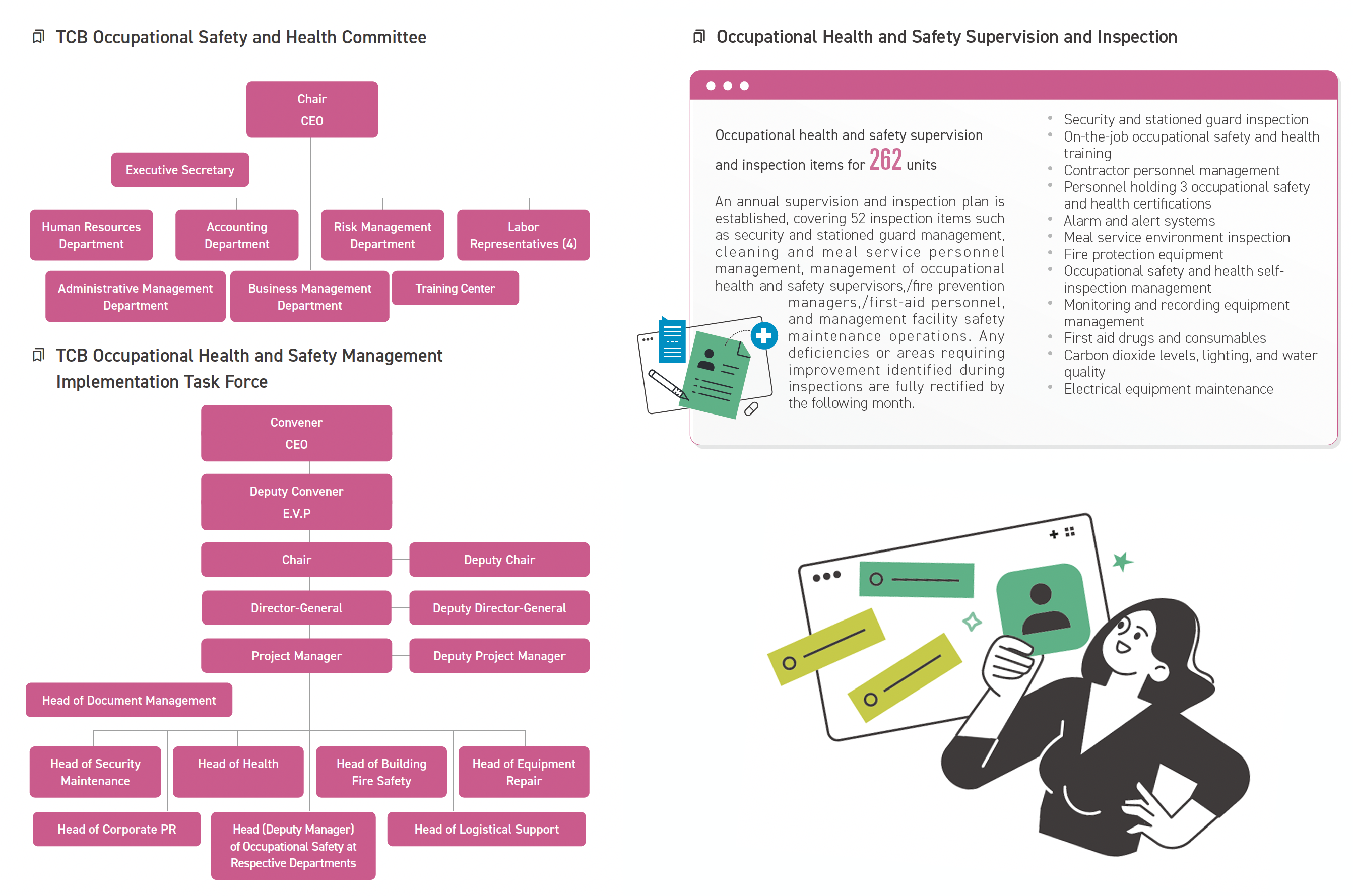
Health Promotion and Safe Workplace
In honor of the April 28 World Day for Safety and Health at Work in 2024, the “Occupational Safety and Health Week Event” was held over a period of 5 days. Through a serious of events such as smart VR enhanced safety simulations, fire evacuation and disaster drills, workplace safety seminars, health lectures, and CPR + AED first aid skills training, we enhanced employees’ awareness of disaster prevention and health knowledge. Led by the highest-ranking supervisor, we also declared a shared commitment with employees to create a safe and healthy workplace.
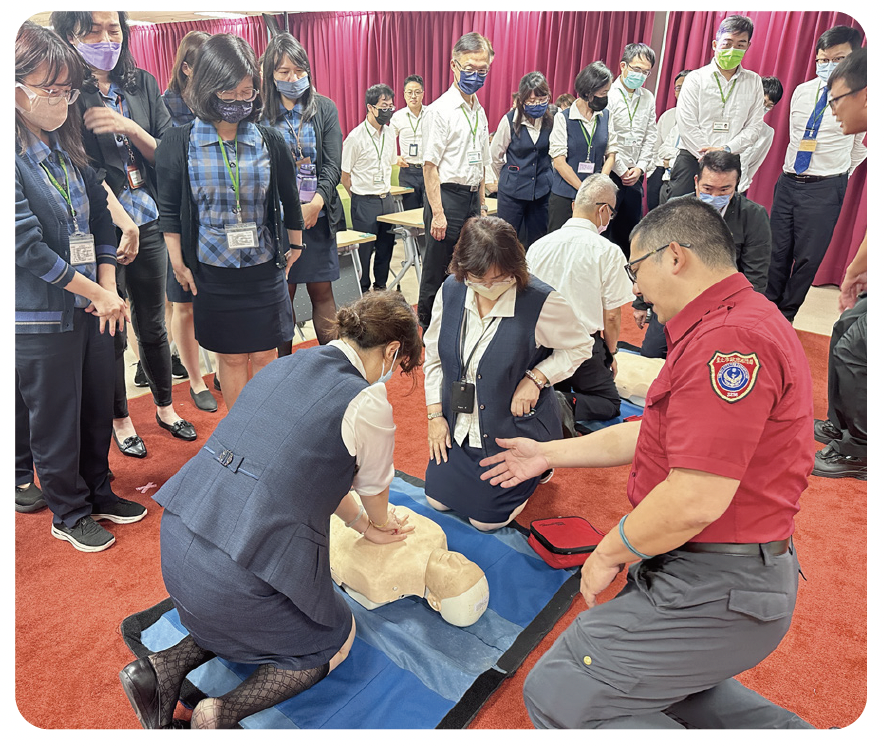
4 Major Prevention Plans
To encourage employees to actively manage their health, we proactively provide medical information, health promotion, and consultation services targeting employees diagnosed with illnesses or identified with the top 10 most common abnormalities in health examinations. In accordance with the Occupational Safety and Health Act, we also promote 4 major prevention plans (prevention of ergonomic hazards, diseases triggered by abnormal workloads, unlawful infringements, and maternal health protection). These initiatives are integrated with employee health examinations, accompanied by questionnaires or on-site physician visits for hazard identification and risk assessment, demonstrating continuous care and support for employees’ physical and mental well-being. No occupational diseases occurred in 2024.
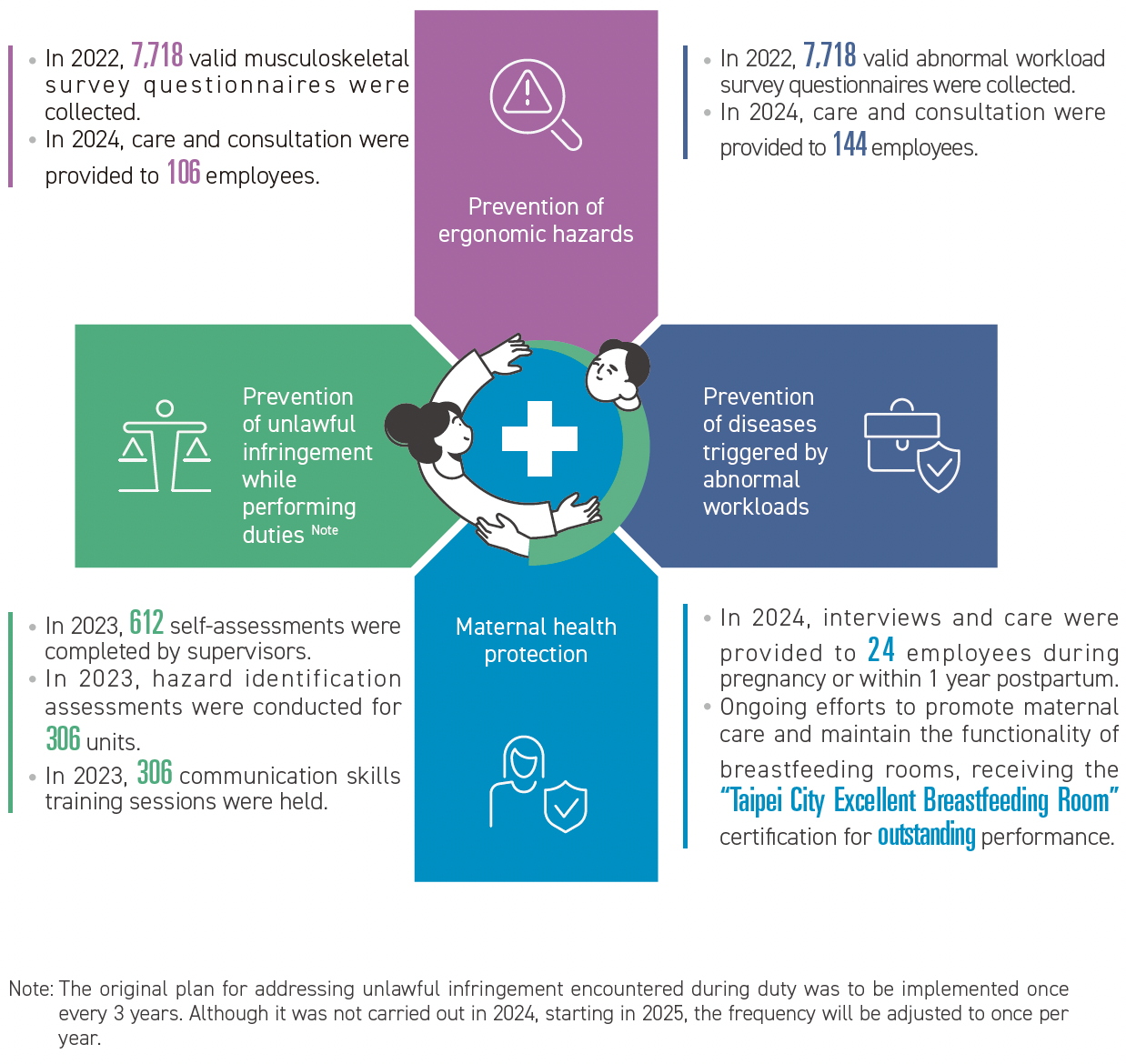
Incident Reporting, Investigation, and Management Procedure Flow
In order to ensure that all employees are fully informed of occupational safety and health regulations and the safety maintenance operational mechanisms, the Group has formulated the “Guidelines for Safety and Sanitation Works” and the “Guidelines for Handling Emergent Injury and Illness” to regulate operational standards on occupational safety and health, as well as principles for handling emergent accidents. At the same time, we comply with legal requirements by conducting regular online reporting of occupational accidents and adhere to the ISO 45001 incident reporting and investigation procedures to ensure investigation of incidents. This helps to monitor employees’ health and safety conditions and reduce the likelihood of accidents recurring.
The “Regulations Governing Emergency and Crisis Management” have been formulated as the basis for handling emergencies. This effectively controls risks and damages arising from emergencies, stabilizes corporate operations, and enables each unit to coordinate smoothly with others and handle the aftermath rapidly. The head office, each regional center, and each business unit have formed “emergency response teams” to assist in handling various hazards and emergencies. In addition, when contractors are disabled due to injuries or pass away due to incidents, the supervisor of the unit responsible for the construction shall report in accordance with the regulations.
To safeguard the safety and health of employees, the TCFCH Group conducted the following training programs in 2024:“Safety Protection Drills” - A total of 1,682 participants received at least 3 hours of training per year, with a cumulative total of 4,107 training hours for all workers. “Security and Occupational Safety Training Courses” - 8,845 participants received at least 1.5 hours of training annually, totaling 17,577 training hours. “Health Seminars”- 8,808 participants received at least 1.5 hours of training annually, with a total of 17,495 training hours.
Each unit within Taiwan Cooperative is required to have at least one designated occupational safety and health supervisor, fire prevention management personnel, and first-aid personnel. A digital system is used to monitor and manage these roles, ensuring immediate training assignment in the event of vacancies. In addition to training at institutions designated by the labor authority, regular on-the-job training is conducted to enhance knowledge and skills related to safety and health.
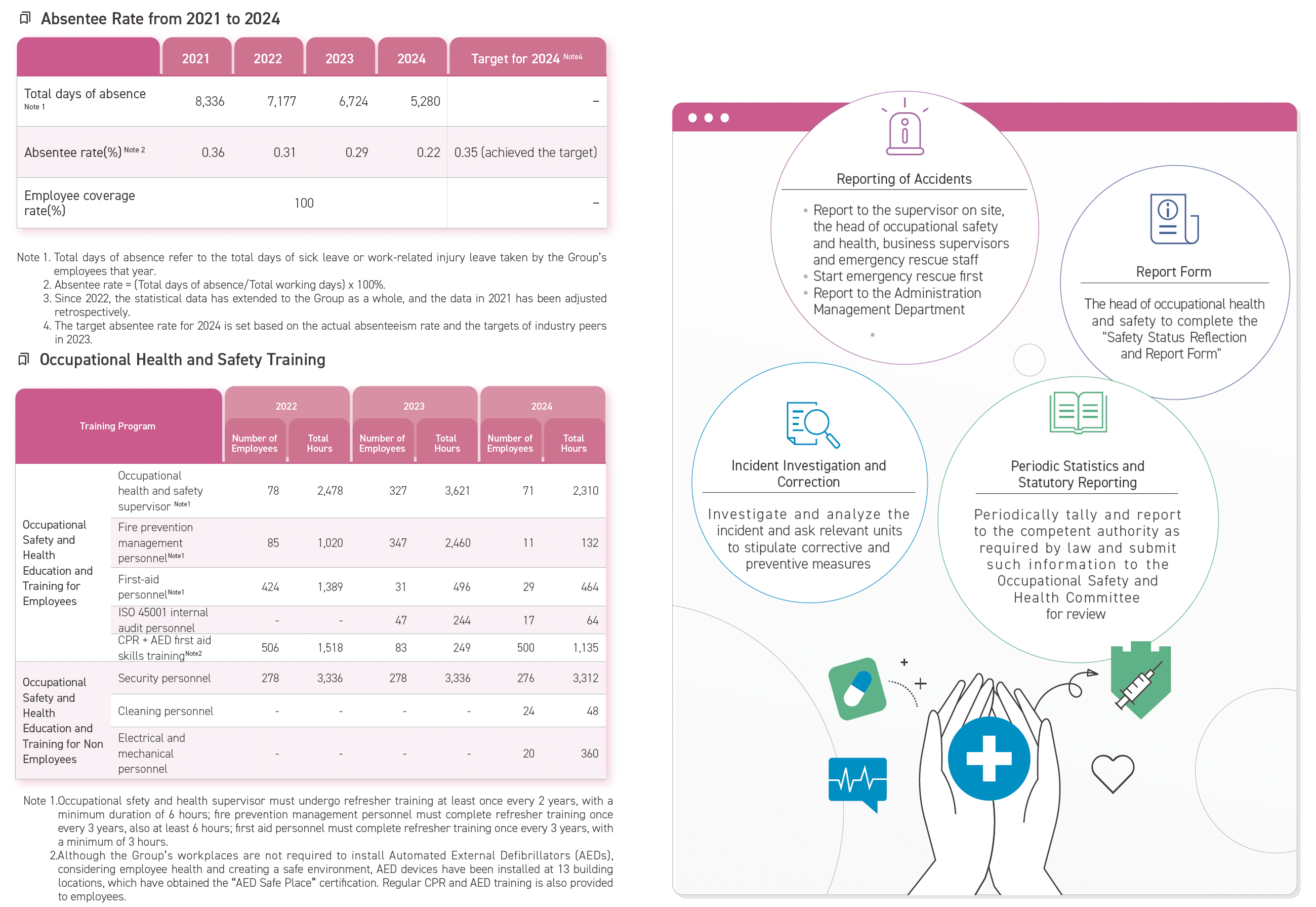
Occupational Safety and Health Risk Assessments
TCFHC plans new annual health management plans and activities based on indicators such as employee health inspections, the effectiveness of health management measures, and epidemiology, with activities like onsite doctor services, health lectures on a diverse array of topics, and the promotion of healthy exercise. We implement risk assessments based on safety status response notification events and hazard identification statistics, formulate target management plans for preventing metabolic syndrome, preventing employee commuting accidents, and improving workplace safety, and set control measures and review implementation results for risk issues.
Based on the 2024 health risk assessment, 4 issues with moderate to high incidence or impact were identified as health risks requiring management. Among them, metabolic syndrome, accidental injury, visual impairment, and infectious disease were recognized as risk factors. For employees with higher risk values, TCFHC organized weight management events and conducted 248 health promotion sessions to effectively reduce the frequency of employee health hazards and enhance organizational efficiency.
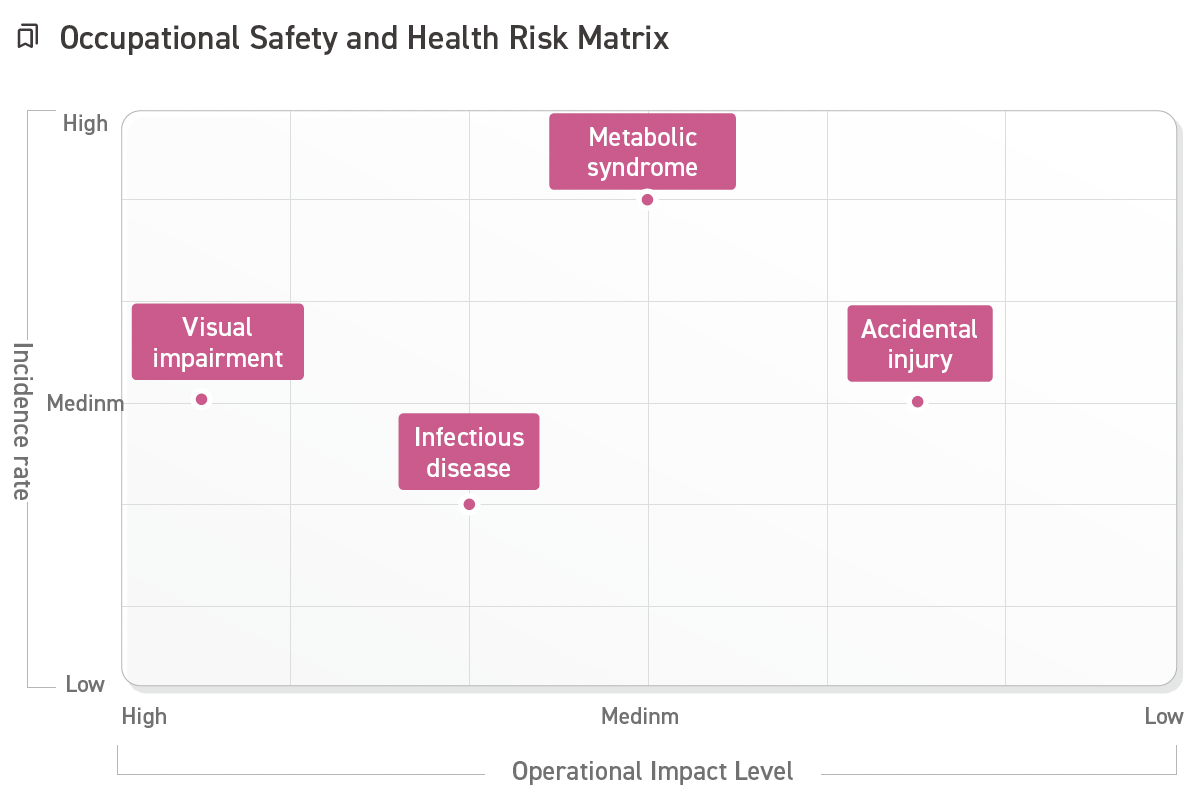
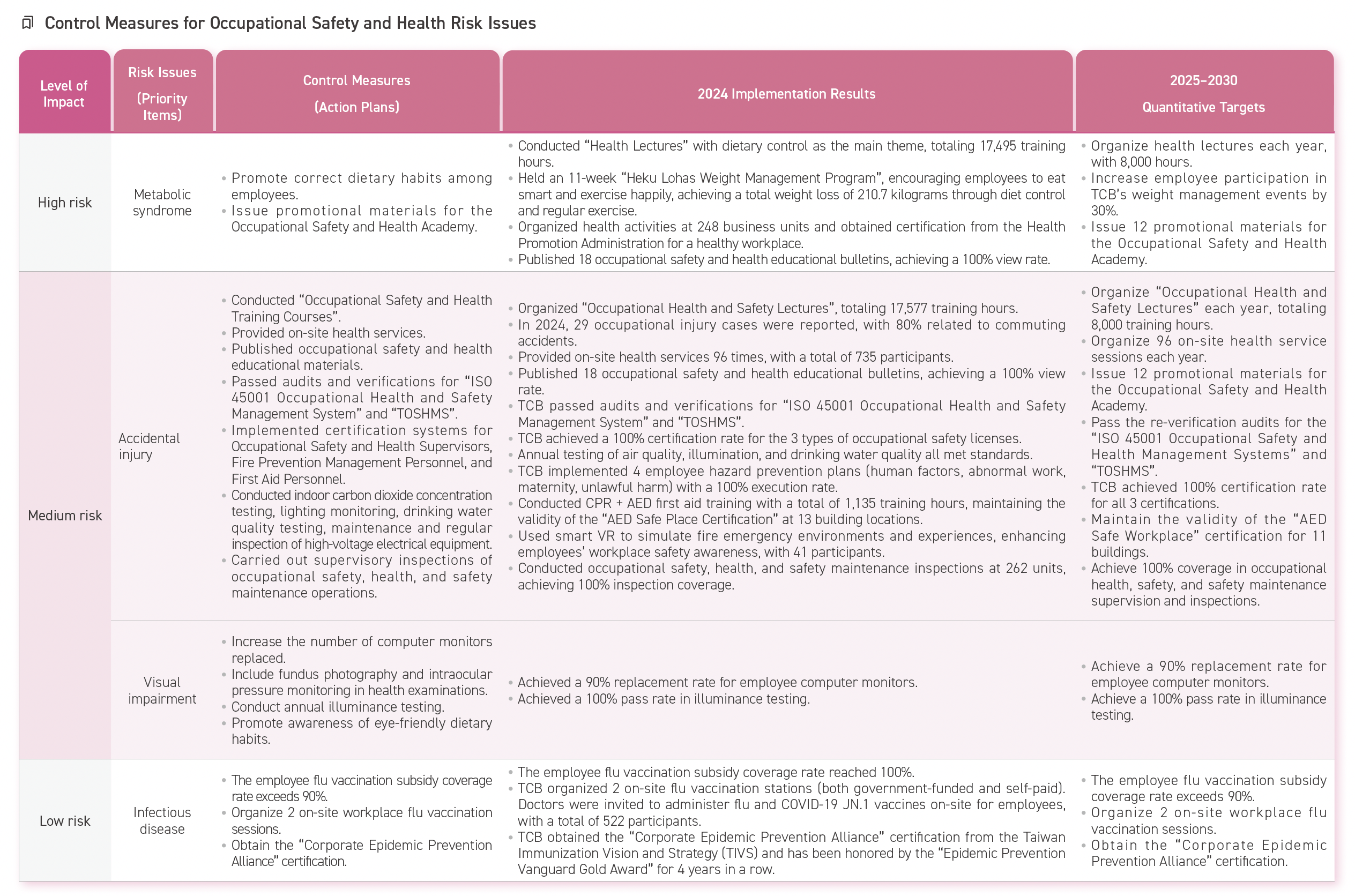
External Certification
External Certification ISO 45001
